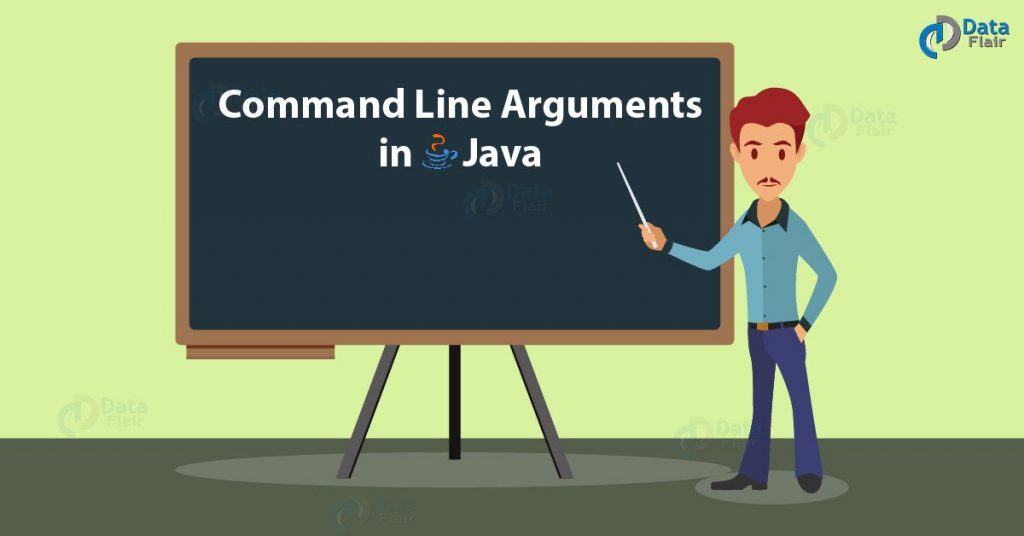Free Java courses with 37 real-time projects - Learn Java
In our last chapter, we talked about How to Read Java Console Input. Now, we are ready to discuss Command Line Arguments in Java Programming. In addition, we will learn the clone() method in Java and deep copy and shallow copy. At last, we study the advantages of clone methods.
So, let’s start Command Line Arguments in Java.
Command Line Arguments in Java
Command line argument is mainly used to control your program from outside. When a command is sent to the JVM, it wraps them and sends them to args[]. The args[] array here actually wraps the arguments by checking the length of the argument using args.length.
Clone() Method in Java
No operator is meant to create a copy of the object in Java which is unlike C++. In Java, we use the assignment operator to create a copy of the variable and not the object.
Example –
package com.dataflair.commandlineargument;
class Test
{
int variable1, variable2;
Test()
{
variable1 = 10;
variable2 = 20;
}
}
public class CloneMethodInJava
{
public static void main(String[] args)
{
Test ob1 = new Test();
System.out.println(ob1.variable1 + " " + ob1.variable2);
Test ob2 = ob1;
ob2.variable1 = 100;
System.out.println(ob1.variable1+" "+ob1.variable2);
System.out.println(ob2.variable1+" "+ob2.variable2);
}
}
Creating a Copy using Clone() Method
The class must have a public clone method in it or in one of its parent class.
- Each class that instantiate clone() should call super.clone() to get the cloned object reference.
- The class should likewise execute java.lang.Cloneable interface whose object clone we need to make, else it will throw CloneNotSupportedException when clone method is approached that class.
Syntax –
protected Object clone() throws CloneNotSupportedException
Usage of Clone() Method – Shallow Copy
Let’s learn Shallow Copy with the help of an example-
package com.dataflair.commandlineargument;
class Test1
{
int variable1, variable2;
}
class Test2 implements Cloneable
{
int testVar1;
int testVar2;
Test1 testObject = new Test1();
public Object clone() throws
CloneNotSupportedException
{
return super.clone();
}
}
public class CloneMethodShallowCopy {
public static void main(String args[]) throws
CloneNotSupportedException
{
Test2 testObject1 = new Test2();
testObject1.testVar1 = 10;
testObject1.testVar2 = 20;
testObject1.testObject.variable1 = 30;
testObject1.testObject.variable2 = 40;
Test2 testObject2 = (Test2)testObject1.clone();
testObject2.testVar1 = 100;
testObject2.testObject.variable1 = 300;
System.out.println(testObject1.testVar1 + " " + testObject1.testVar2 + " " +
testObject1.testObject.variable1 + " " + testObject1.testObject.variable2);
System.out.println(testObject2.testVar1 + " " + testObject2.testVar2 + " " +
testObject2.testObject.variable1 + " " + testObject2.testObject.variable2);
}
}
Technology is evolving rapidly!
Stay updated with DataFlair on WhatsApp!!
Hence, in the above illustration, t1.clone restores the shallow clone of the object t1. Basically, to get a deep clone of the objects certain alterations must be made in clone method for getting the duplicate.
Deep Copy Vs Shallow Copy
- A shallow copy is a method for replicating an object and is followed a default in cloning. In this method, the fields of an old object are replicated to the new object. While duplicating the question, the reference is replicated i.e. object will point to the same area as pointed out.
- In this way, any changes made in referenced objects will be reflected in other objects.
Usage of Clone Method – Deep Copy
- On the off chance that we need to make a deep copy of object X and place it in another question Y, then a new duplicate of any referenced articles fields are made and these references are set in object Y. This implies any progressions made in referenced question fields in object X or Y will be reflected just in that question and not in the other.
- A deep duplicate duplicates all fields and makes duplicates of powerfully apportioned memory indicated by the fields. A deep duplicate happens when a protest is replicated alongside the articles to which it alludes.
package com.dataflair.commandlineargument;
class Demo
{
int variable1, variable2;
}
class Demo1 implements Cloneable
{
int testVar1, testVar2;
Demo testVar3 = new Demo();
public Object clone() throws
CloneNotSupportedException
{
Demo1 t = (Demo1)super.clone();
t.testVar3 = new Demo();
return t;
}
}
public class CloneMethodDeepCopy {
public static void main(String args[]) throws
CloneNotSupportedException
{
Demo1 demoObj1 = new Demo1();
demoObj1.testVar1 = 10;
demoObj1.testVar2 = 20;
demoObj1.testVar3.variable1 = 30;
demoObj1.testVar3.variable2 = 40;
Demo1 demoObj2 = (Demo1)demoObj1.clone();
demoObj2.testVar1 = 100;
demoObj2.testVar3.variable1 = 300;
System.out.println(demoObj1.testVar1 + " " + demoObj1.testVar2 + " " +
demoObj1.testVar3.variable1 + " " + demoObj1.testVar3.variable2);
System.out.println(demoObj2.testVar1 + " " + demoObj2.testVar2 + " " +
demoObj2.testVar3.variable1 + " " + demoObj2.testVar3.variable2);
}
}
Advantages of Clone Method
- If we want to use the assignment operator to assign an object reference to another reference then it will indicate to the same address of the old object and new copy will not be created.
because of the changes, any changes in the reference variable will be reflected in the actual object. - In copy constructor, we have to copy the data explicitly or we can say we have to reassign all the fields of constructor. But by using clone method, new copy is created by method itself. To avoid unnecessary processing we used object cloning.
So, this was all about the tutorial, Command Line Arguments in Java and Clone Method in Java. Hope you like our explanation
Conclusion
Hence, in this tutorial of Command Line Arguments in Java and Clone Method in Java, we have a complete understanding of Command Line Arguments in Java and about the clone() method in Java. Moreover, we saw creating a copy using clone() method with syntax and examples. In addition, we discussed usage of Clone method as Shallow Copy and Deep Copy. At last, we saw the advantages of Clone Method. Furthermore, if you have any query in Command Line Arguments and Clone method, you can ask in the comment section.
